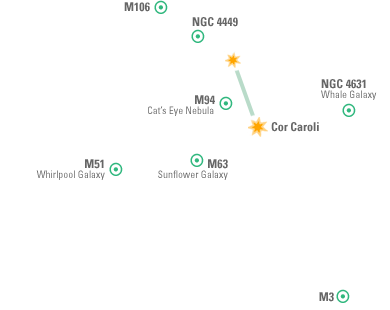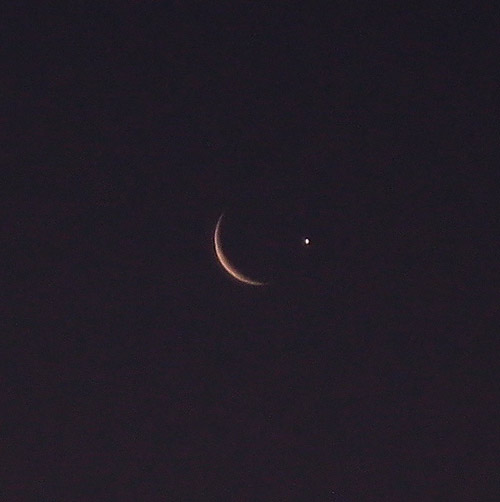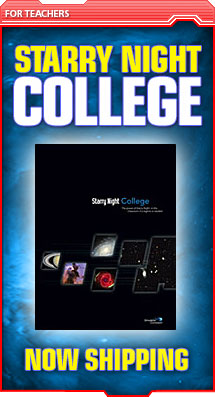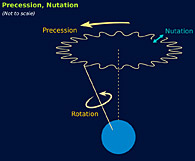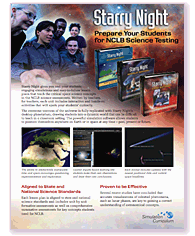 |
||||||||||||||||||||||||||||||||||||||||||||||||||||||||||||||||||||||||||||||||||||||||||||||||||||||||||||||||||||
|
If you have trouble viewing this newsletter, click here. Welcome again to our monthly educational newsletter with features on exciting celestial events, product reviews, tips & tricks, and a monthly sky calendar. We hope you enjoy it!
One of the most useful features added to version 6 of Starry Night® is the capability of automatically generating three-pane charts of the sky. I use this feature all the time to generate custom charts to take out with my telescope when I go hunting new and different objects. What this feature lets you do is to print three different views of the same object on a single page. Most often, these will be three different image scales. For example, if you’re printing a chart of a galaxy, you might want three views: a wide “naked eye” view showing the surrounding constellations, a medium view showing what you might see in 10x50 binoculars or the telescope’s finder scope, and a detailed view showing the object amid its immediate surroundings, as you might see it in a low power eyepiece in your telescope. The exact scales you use for these three views will vary depending on the specific object and your degree of experience with the sky. I tend to think of the three views as
This gives a gradual “zoom in” on the object; the actual fields of view depend on the richness of the star fields. The three-pane printout uses the local orientation, so it’s possible to set up a view for a very specific time and date. If you want a more generic “equatorial” orientation, choose a time and date when the object is on your local meridian. This is easy to find by clicking on the “Transit” button on the “Info” pane. Here are a couple of three-pane charts which I prepared recently for a series of articles I’m writing for Space.com. The first <Sombrero Galaxy.pdf> is a “generic” chart for finding M104, the Sombrero Galaxy. It is shown at a specific time and date when M104 is transiting the local meridian. The second <M44 M67 chart.pdf> is a chart for a specific event, the Moon being between the two bright open clusters in Cancer. Here the charts are all in local view for that particular time and date, close to the western horizon. When setting up the three panes in the “Print” dialog, you also have the option of changing the orientation of any of the views. This is very useful if you want to show the telescopic view inverted (as in a Newtonian telescope) or flipped, as in a refractor of Cassegrain with a diagonal. Starry Night® offers you a choice of several different printing settings. Probably the “Classic Star Atlas” settings are the best, but I usually use my own preferred settings. These include the astronomical stick figures, the outlines of the objects, constellation names, and some star names. I often increase the font size of labels to make them more readable under dim red light. I find that the right ascension and declination grid gets in the way when I’m starhopping, so I leave that turned off. I often increase the maximum size of stars so as to emphasize the brighter stars. The important point is that Starry Night® gives you enough flexibility in generating three-pane charts that you can quickly produce good looking handouts for your next star party. Geoff Gaherty
The solidity of any mount is dependent on the tripod which supports it. Until recently this was the weak point of many mounts: excellent mounts on shaky tripods. The tripod used for the Sirius is made of solid tubular steel, with a spreader acting against the legs to make a rigid triangular structure. It doesn’t get much better than this. The equatorial head has the usual arrangement for adjusting the altitude and azimuth of the polar axis, including smooth slow motions in both. Combined with the built-in polar alignment scope and the information the computer provides on Polaris, polar alignment is a snap. The head itself is a modern design with all motors and wiring contained within the outer shell of the mount. When in operation, the only external cords are the power input and the hand controller cord, plus autoguider cable if used. A single switch with indicator light at the juncture of polar and declination axis controls the power for the mount and controller. Altogether, this is an elegant and clean design. The mount itself operates smoothly and provides solid support for optical tubes up to 30 pounds in weight. In particular, it handled the 16 pound weight of the Orion 180 mm Maksutov-Cassegrain with ease, though the 11-pound standard counterweight needed to be supplemented with a counterweight borrowed from one of my Vixen mounts. The ball bearings on both axes are very smooth, as is the gearing of the slow motions. The whole mount exudes a sense of competence and solidity. This is the first German equatorial mount with a GoTo computer that I’ve tested, and it is quite a different experience from the several altazimuth GoTo mounts I’ve used. Although an accurate polar alignment isn’t completely necessary, it does help the accuracy of the GoTo computer. There are three different levels of alignment, using one, two, or three stars. The three star alignment is the most accurate, and almost essential unless the mount’s polar axis is carefully aligned. Once aligned with the three star alignment, the mount placed targets comfortably within the 0.6 degree field of the lowest magnification on the 180 mm Maksutov.
Here’s a bit more about alignment. The more stars you use, the more accurate the alignment will be, and the less accurate the actual polar alignment need be. The mount’s computer assumes the polar alignment, site location, and time and date entered are accurate, and slews to each alignment star on that basis. The more accurate everything is, the more accurate the initial slew will be, and the more quickly full alignment can be achieved. My main observing location has one oddity: I can’t actually see Polaris from it. However, I discovered that, with everything but polar alignment accurate, the mount would slew close to the target star, and then I could use the mount’s altitude and azimuth controls to align the polar axis using that star—very neat! For maximum accuracy, you should use a star near the celestial equator for a 1-star alignment, two stars on the same side of the meridian for a two-star alignment, and two stars on one side of the meridian and a third star on the other side of the meridian for a three-star alignment. Even with a fairly sloppy polar alignment, a three-star alignment placed objects accurately within the field of my 24 mm Stratus eyepiece in the 180 mm Maksutov-Cassegrain. After the relative straightforward paths that an altazimuth mount takes to get from one object to the next, a German equatorial mount proves to be slower and more laborious, if crossing the meridian is required. Initially I found it quite entertaining to watch the contortions the mount went through, but the slow speed became annoying after a while. You need to plan your observations well to try to avoid meridian crossings. The built in databases are fairly limited. The solar system objects include the Moon, but not the Sun. There are the usual Messier, Caldwell, NGC, and IC databases. Double star and variable star databases are very limited: 55 doubles and 20 variables. There are only 25 slots available for user-defined objects, which is nowhere near enough for an active variable star observer like myself. The Sirius mount includes a number of useful features if astrophotography is your interest, including standard autoguider input and periodic error correction. Backlash can be fine-tuned to improve guiding. A connector on the hand control allows connection to a laptop computer, so that the mount can be guided by software like Starry Night®. In summary, Orion’s Sirius mount is an excellent compromise between mount weight and carrying capacity. Its clean modern design has many convenient features, and is suitable for most medium sized telescopes up to about 8 inches aperture. Geoff Gaherty
Neptune’s Orbit On the face of a clock, the hour hand is always pointing at the same place where it was pointing 12 hours ago. If the clock was slightly elliptical instead of round, like a planet's orbit, this would still be true. If you consider that the positions of the background stars don't change much over the course of one Earth year, you can imagine that from the Sun's perspective, the Earth will be seen against the same background stars at the same time each year, as if it were a clock hand that takes a year to go around. (Over thousands of years there would be changes due to orbital precession, but you don't see that very much over just one year.) Neptune's orbit around the Sun takes just under 165 years. Neptune was discovered on 23 September 1846 – that's coming up on 165 years ago. Here's what Urbain le Verrier would have seen through his telescope:
And here's what you'll see if you point your own telescope at Neptune on 20 February 2011, one full Neptunian orbit later:
(Yes, the Sun and other solar system objects are in it, and Neptune's orbital line is tilted differently as seen from Earth – that's because it's a different season!) The minute hand of a clock moves more quickly than the hour hand, like a planet closer to the Sun. It catches up to the hour hand twelve times a day, slightly more than an hour after they last met. Similarly, even though humanity has only observed one orbit of Neptune around the Sun, closer-in planets catch up to it frequently. Jupiter, with an orbital period of almost 12 years, catches up to Neptune every twelve-years-and-a-bit. You can see Jupiter and Neptune close together in the sky this spring and summer – just as Galileo saw them in December 1612 and January 1613, when he marked Neptune as a background star in his sketches of Jupiter! Brenda Shaw
Some of the first telescopic observations of dark regions on the Sun were made in late 1610 and early 1611 by Thomas Harriot, David Fabricius and Christoph Scheiner as well as Galileo. In January of 1612 Scheiner, a Jesuit mathematician, had published an account of these “spots” on the Sun. Since he could not conceive the Sun to be anything but perfect, Scheiner thought these spots were actually satellites in orbit around the Sun. These early observations were probably made in the early morning or late evening when the Sun was close to the horizon. Although it was then relatively safe to observe the Sun with such tiny telescopes, not much detail could have been seen. Galileo began to seriously study sunspots in April of 1612. At this time, a pupil of Galileo, used the telescope to project an image of the Sun. This allowed Galileo to safely observe the Sun when it was high in the sky giving better images. He saw that sunspots were irregular in shape and appeared to move in unison across the visible surface of the Sun. Rather than being in orbit around the Sun, Galileo reasoned that the sunspots were on the surface of the Sun and their motion was due to the rotation of the Sun itself. Whether Galileo was the first to observe sunspots is not entirely clear but he was probably among the first to deduce they were part of the Sun. Even Scheiner eventually conceded that Galileo was correct and used sunspots to measure the rotation period of the Sun. Use the file <Galileos_Sun.snf> to measure the rotation of the Sun yourself. Simply step time forward until the dark spot is at the center of the Sun’s disk again and note the number of days that have elapsed. NOTE: Do NOT attempt to observe the Sun at ANY time through any optical device that is not specifically designed for that purpose!! Herb Koller
Known Dwarf Planets There are currently five dwarf planets in our solar system. Download this file to view their location and orbits within the solar system. Hold down the SHIFT key and click-drag the screen to change your perspective. Which dwarf planet is a member of the main asteroid belt? Which one is the furthest from the Sun? The biggest? Pedro Braganca
This part of the sky floats above the celestial north pole so there isn't a lot of interstellar dirt obscuring our lines of sight toward some interesting, though faint, galaxies. M51, the Whirlpool Galaxy, is a good example of quantity equaling quality: time spent with M51 reaps rewards, with brief flashes of clarity that slowly build in your mind's eye to a fascinating whole. Although faint, two cores are visible; the second, less bright core is that of NGC 5195, a smaller galaxy interacting gravitationally with its large neighbor. Get yourself as dark adapted as possible. Averted vision will bring out hints of the spiral arms. Some nights are better than others. M63 and M94 are two more spiral galaxies, less spectacular, but interesting to compare with each other and with M101 and M51. Cor Caroli is a nice double even in small scopes. Note the color difference. Cor Caroli has only 2.3 times the radius of our sun yet shines a hundred times as bright. NGC 4631 is also known, quite properly, as the Whale Galaxy. It's faint, huge, elongated and completely awesome in the eyepiece. NGC 4449 is an irregular galaxy in Canes Venatici. In comparison to the Whale, this galaxy is elongated, kinked, and a bit weird looking. Moving away from some of the fainter targets, M106 is a big galaxy with a bright disc. Easy hunting. Finally, with an estimated half-million stars, M3 is one of the sky's finest globular clusters. While visible to the naked eye, the more photons your telescope or binoculars can capture, the more stars you'll be able to resolve. Sean O'Dwyer
Venus/Moon occultation by David Likuski from Oakland, CA on April 22, 2009.
RULES: We would like to invite all Starry Night® Education users to send their quality astronomy photographs to be considered for use in our monthly newsletter. Please read the following guidelines and see the submission e-mail address below.
|
JUN 2009
|
|||||||||||||||||||||||||||||||||||||||||||||||||||||||||||||||||||||||||||||||||||||||||||||||||||||||||||||||||||
 |
||||||||||||||||||||||||||||||||||||||||||||||||||||||||||||||||||||||||||||||||||||||||||||||||||||||||||||||||||||
|
|
||||||||||||||||||||||||||||||||||||||||||||||||||||||||||||||||||||||||||||||||||||||||||||||||||||||||||||||||||||
You have received this e-mail as a user of Starry Night® or as a registrant at starrynighteducation.com
To unsubscribe, click here.
 Remember the story of Goldilocks and the three bears? Papa Bear’s porridge was too hot, Mama Bear’s porridge was too cold, but Baby Bear’s porridge was “just right”? The Orion Sirius mount is a good example of a “just right” telescope mount. It’s not as massive as the Atlas mount, but it’s more solid and capable of carrying a heavier load than the SkyView Pro mount. More than this, it has all the advanced features of the Atlas mount, while weighing in at 6.5 pounds lighter, a big help if you need to transport your mount to a distant observing site.
Remember the story of Goldilocks and the three bears? Papa Bear’s porridge was too hot, Mama Bear’s porridge was too cold, but Baby Bear’s porridge was “just right”? The Orion Sirius mount is a good example of a “just right” telescope mount. It’s not as massive as the Atlas mount, but it’s more solid and capable of carrying a heavier load than the SkyView Pro mount. More than this, it has all the advanced features of the Atlas mount, while weighing in at 6.5 pounds lighter, a big help if you need to transport your mount to a distant observing site. The hand controller is a bit different that the ones I’m used to on Celestron and Meade telescopes. There are four groups of buttons. At top are the mode buttons which are the main controls. Below these are the standard diamond of directional buttons. Below these are ten buttons which allow numerical entry and double as hot buttons to various mount features. Finally there are two scroll buttons.
The hand controller is a bit different that the ones I’m used to on Celestron and Meade telescopes. There are four groups of buttons. At top are the mode buttons which are the main controls. Below these are the standard diamond of directional buttons. Below these are ten buttons which allow numerical entry and double as hot buttons to various mount features. Finally there are two scroll buttons.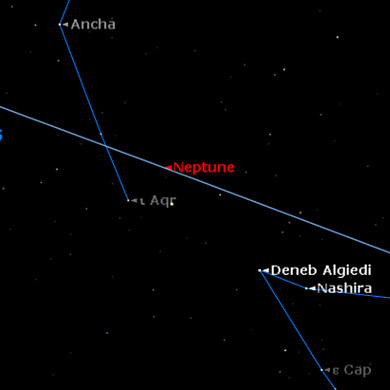
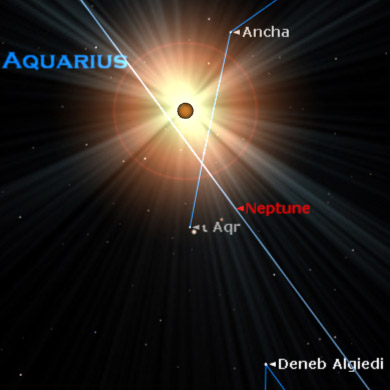
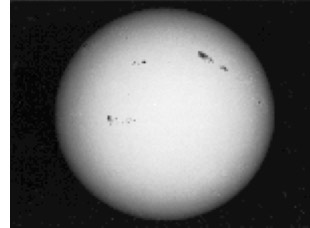 The Spotted Sun
The Spotted Sun